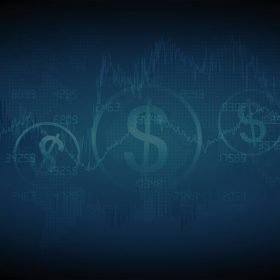Credit Card Binge –Again!
By Terry Savage on July 18, 2018
They say that the lessons that cost the most, teach the most.
But Americans obviously haven’t learned the lessons of debt. When it comes to credit card debt, we’re back up over $1.04 trillion again, and total consumer revolving debt is now higher than it was in 2008. With unemployment low and consumer confidence high, Americans have gone on a spending and debt binge.
A new report by MagnifyMoney.com tallies the amount Americans paid in credit card interest and fees last year: a costly $104 billion. That’s up 11 percent from the previous year, and up 35 percent in the past five years.
It’s money down the drain for consumers, but big profits for banks and card lenders. And those payments are likely to rise another 10 percent in the current year, as the Fed continues a series of rate hikes, says Nick Clements, co-founder of MagnifyMoney:
“We did this study focusing on the actual interest paid because credit card contracts are variable interest rate based and tied to prime, so any Fed action results in an immediate increase in the cost of debt, making it harder to get out of chronic debt.”
The average APR on credit card accounts that are paying interest is 15.5 percent, according to MagnifyMoney. But many cardholders — especially accounts with larger balances — are paying 28 percent or higher. The card issuers know when you are in over your head, and they’re squeezing Americans caught in the debt trap.
What to do
Step 1: Make a list of your outstanding credit card balances and the interest rate on each, as well as the minimum monthly payment. Then add it all up.
If you pay only the minimum monthly payment, it could take you as long as 31 years to pay down the balance. And along the way, you’ll pay four times the purchase price in interest and fees. The low minimum amounts are calculated to make you feel good, but you’re digging yourself a deep hole.
Step 2. Stop carrying your credit card(s) in your wallet — and erase the “click here” credit card link for the websites where you do your late night shopping.
Step 3. Then follow this simple formula that will cut your repayment time from more than 30 years to less than three years:
Take the current month’s minimum payment and double it. Write that amount down and pay that exact same amount every month from now on. Don’t charge another penny. Pay on time every month and don’t incur late fees. If you stick to this plan, the balance will be paid off in less than three years.
Step 4. Plan to use your debit card instead of those burdensome credit cards. You won’t get miles or rewards points. But all of those “benefits” of credit cards pale in comparison to the cost of the interest you pay on balances carried month-to-month.
Step 5. Explore alternatives. If you have good credit and are current in paying at least the minimums, you might be able to transfer your balance without paying a fee and even get a grace period of no-interest charges for at least 15 months. Use that time to pay down your balance because the rate will jump sharply at the end of the grace period. You can find a list of best balance transfer deals at this link on the MagnifyMoney website: MagnifyMoney.com.
Or, if you know you won’t be able to pay down the credit card balance in the next two years, consider converting your balance to a personal loan. Rates are in the single digits if you qualify with good credit. To learn more about personal loan possibilities at MagnifyMoney, click on this link.
Another debt bubble is getting ready to burst when the economy slows down and jobs are lost. You won’t be part of the disaster if you prepare now. And that’s The Savage Truth.



